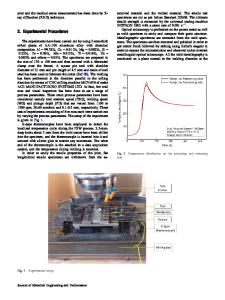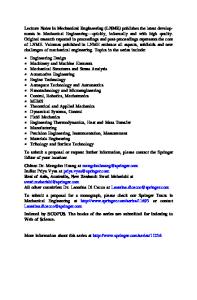Strength Assessment of Welded Joints of High-Strength Alloy Steels by Indentation Method
- PDF / 704,837 Bytes
- 7 Pages / 594 x 792 pts Page_size
- 68 Downloads / 623 Views
STRENGTH ASSESSMENT OF WELDED JOINTS OF HIGH-STRENGTH ALLOY STEELS BY INDENTATION METHOD Î. À. Katok,a R. V. Kravchuk,a,1 V. V. Kharchenko,a M. P. Rudnits’kyi,a
UDC 539.4
S. P. Bisyk,b L. S. Davydovs’kyi,b and Î. À. Slyvins’kyic The paper presents the indentation method for strength assessment of the welded joints in high-strength alloy steels, including base metal, heat-affected zone, and welded joint, in production after application of selected flaw detection methods as a final stage of non-destructive testing methods. Non-destructive testing methods are mainly used to detect defects, their location, size, and nature. The indentation method allows one to determine both the joint strength and the strength and dimensions of the heat-affected zone during the production process. The authors performed the comparative analysis on the hardness and strength limit of welded joints of 30Kh2ÑN2ÌFÀ and 28GRÀ alloy steels as delivered of sheet metal of 6 mm in thickness (for the production of special structures) to corroborate the method efficiency. It is shown that the Brinell hardness values obtained by the TSH-2 stationary hardness tester, ERNST Computest SC portable hardness tester, and instrumented indentation imply the same nature of the hardness distribution along the length of the specimen cut across the axis of the welded joint. The distribution nature of the strength limit values determined by the indentation method is similar to that of the Brinell HBW hardness distribution. It is established that the deviation of strength limit values determined by the indentation method did not exceed 3.7%. Keywords: method, welded joint, non-destructive testing, hardness, strength limit, instrumented indentation, high-strength alloy steels. Introduction. One of the key properties of high-strength alloy steels, along with their high mechanical characteristics, is their welding ability, as the most common method of connection in special structures. The welding process of such steels is accompanied by softening in the weld metal and the heat-affected zone of the material, which reduces the welded joint resistance to fracture dramatically. The problem is complicated by the fact that the necessary operational and technological properties of welded joints should be obtained mostly without additional heat treatment after welding [1]. Therefore, the issue of control for welded joints remains to be topical [2, 3]. Quality control for welding activities can be destructive and non-destructive. The case in point is the non-destructive testing method used to verify the quality of joints without their fracture. In non-destructive tests, which are usually performed on the products, some physical properties that indirectly characterize the strength or reliability of the joints are evaluated. These properties, or rather their variation, are mainly associated with the presence of defects. In this regard, with the help of these methods, one can detect the location of defects, their size, and nature (defectoscopy). All non-destructive methods of
Data Loading...











